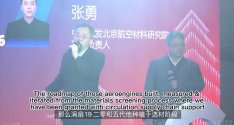Sounds like a less efficient engine in terms of size compared to the PW2000 and RB211 535 then.
this is going to be long post. i hope you will read this.
total thrust cannot measure efficiency and performance of an engines..
there are three process that can define the ENGINE efficiency and performance
1. engine cycle design (that’s things like the number of fan compressor and turbine stages, and mechanical efficiency of the turbine, etc).
2. material quality, which determines “how hard and fast and hot can run this engine
3. and the most important is your production process quality.
*************************************************************************************
WS-20 gone from various process and changes in material/components since its first flight has taken back in 2013.
AECC confirmed in march. we have not yet selected the material of WS-20.
so most probably WS-20 engine materials have already been finalized. and i don't think so i need to tell where currently China stands in advance materials. so WS-20 engine will have latest material and components.

WS-20 initial target was 40,000 lbf class engine. but Liming faced many hurdles and bottleneck during its development. this project was the first proper high bypass turbofan engine in PRC aero engine industry. so they have decided to play safe and this is why it took so long for WS-20 to finish and completed first flight test in 2013. and Engine continue is in testing phase. its been 10 years already.
in 2022, Liming announced that 'the large bypass ratio turbofan engine pulsation assembly production line has completed'

now you see, WS-20 gone through very difficult process. and its been a long journey.
Liming also working on WS-20's advance variant. with more thrust and larger bypass ratio.









